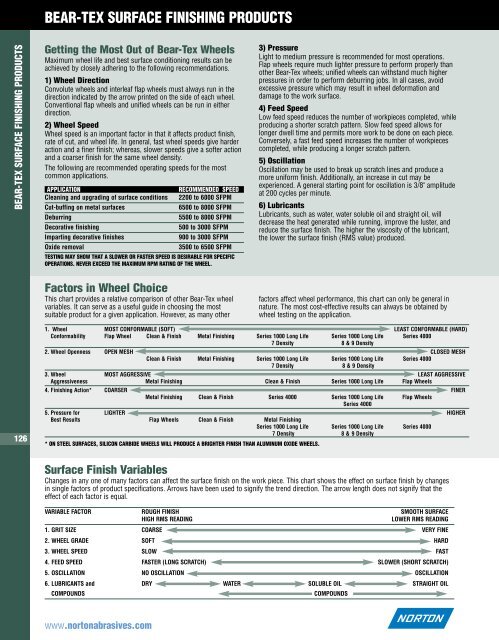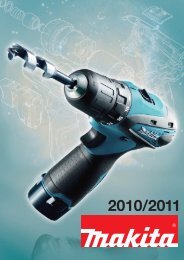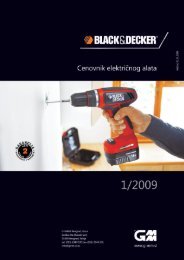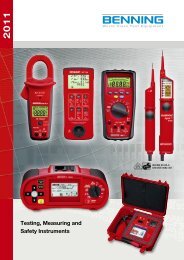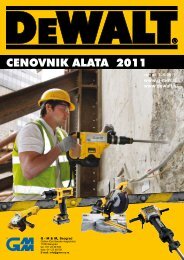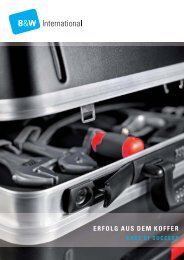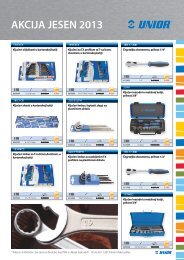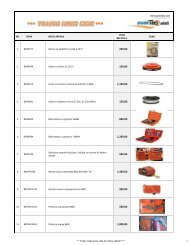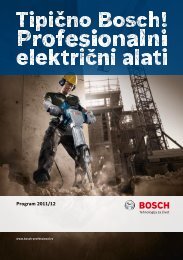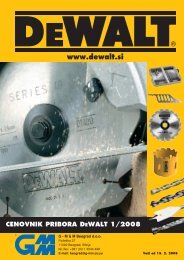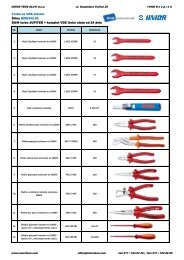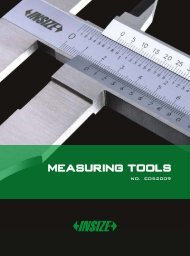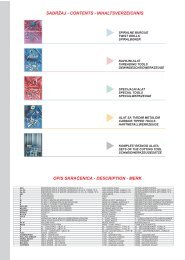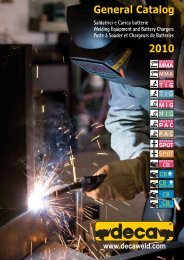Cut-off Wheels
Cut-off Wheels
Cut-off Wheels
Create successful ePaper yourself
Turn your PDF publications into a flip-book with our unique Google optimized e-Paper software.
BEAR-TEX SURFACE FINISHING PRODUCTS<br />
BEAR-TEX SURFACE FINISHING PRODUCTS<br />
Getting the Most Out of Bear-Tex <strong>Wheels</strong><br />
Maximum wheel life and best surface conditioning results can be<br />
achieved by closely adhering to the following recommendations.<br />
1) Wheel Direction<br />
Convolute wheels and interleaf flap wheels must always run in the<br />
direction indicated by the arrow printed on the side of each wheel.<br />
Conventional flap wheels and unified wheels can be run in either<br />
direction.<br />
2) Wheel Speed<br />
Wheel speed is an important factor in that it affects product finish,<br />
rate of cut, and wheel life. In general, fast wheel speeds give harder<br />
action and a finer finish; whereas, slower speeds give a softer action<br />
and a coarser finish for the same wheel density.<br />
The following are recommended operating speeds for the most<br />
common applications.<br />
APPLICATION<br />
RECOMMENDED SPEED<br />
Cleaning and upgrading of surface conditions 2200 to 6000 SFPM<br />
<strong>Cut</strong>-buffing on metal surfaces<br />
6500 to 8000 SFPM<br />
Deburring<br />
5500 to 8000 SFPM<br />
Decorative finishing<br />
500 to 3000 SFPM<br />
Imparting decorative finishes<br />
900 to 3000 SFPM<br />
Oxide removal<br />
3500 to 6500 SFPM<br />
TESTING MAY SHOW THAT A SLOWER OR FASTER SPEED IS DESIRABLE FOR SPECIFIC<br />
OPERATIONS. NEVER EXCEED THE MAXIMUM RPM RATING OF THE WHEEL.<br />
3) Pressure<br />
Light to medium pressure is recommended for most operations.<br />
Flap wheels require much lighter pressure to perform properly than<br />
other Bear-Tex wheels; unified wheels can withstand much higher<br />
pressures in order to perform deburring jobs. In all cases, avoid<br />
excessive pressure which may result in wheel deformation and<br />
damage to the work surface.<br />
4) Feed Speed<br />
Low feed speed reduces the number of workpieces completed, while<br />
producing a shorter scratch pattern. Slow feed speed allows for<br />
longer dwell time and permits more work to be done on each piece.<br />
Conversely, a fast feed speed increases the number of workpieces<br />
completed, while producing a longer scratch pattern.<br />
5) Oscillation<br />
Oscillation may be used to break up scratch lines and produce a<br />
more uniform finish. Additionally, an increase in cut may be<br />
experienced. A general starting point for oscillation is 3/8" amplitude<br />
at 200 cycles per minute.<br />
6) Lubricants<br />
Lubricants, such as water, water soluble oil and straight oil, will<br />
decrease the heat generated while running, improve the luster, and<br />
reduce the surface finish. The higher the viscosity of the lubricant,<br />
the lower the surface finish (RMS value) produced.<br />
BEAR-TEX SURFACE FINISHING PRODUCTS<br />
Factors in Wheel Choice<br />
This chart provides a relative comparison of other Bear-Tex wheel<br />
variables. It can serve as a useful guide in choosing the most<br />
suitable product for a given application. However, as many other<br />
factors affect wheel performance, this chart can only be general in<br />
nature. The most cost-effective results can always be obtained by<br />
wheel testing on the application.<br />
126<br />
1. Wheel MOST CONFORMABLE (SOFT) LEAST CONFORMABLE (HARD)<br />
Conformability Flap Wheel Clean & Finish Metal Finishing Series 1000 Long Life Series 1000 Long Life Series 4000<br />
7 Density 8 & 9 Density<br />
2. Wheel Openness OPEN MESH CLOSED MESH<br />
Clean & Finish Metal Finishing Series 1000 Long Life Series 1000 Long Life Series 4000<br />
7 Density 8 & 9 Density<br />
3. Wheel MOST AGGRESSIVE LEAST AGGRESSIVE<br />
Aggressiveness Metal Finishing Clean & Finish Series 1000 Long Life Flap <strong>Wheels</strong><br />
4. Finishing Action* COARSER FINER<br />
Metal Finishing Clean & Finish Series 4000 Series 1000 Long Life Flap <strong>Wheels</strong><br />
Series 4000<br />
5. Pressure for LIGHTER HIGHER<br />
Best Results Flap <strong>Wheels</strong> Clean & Finish Metal Finishing<br />
Series 1000 Long Life Series 1000 Long Life Series 4000<br />
7 Density 8 & 9 Density<br />
* ON STEEL SURFACES, SILICON CARBIDE WHEELS WILL PRODUCE A BRIGHTER FINISH THAN ALUMINUM OXIDE WHEELS.<br />
Surface Finish Variables<br />
Changes in any one of many factors can affect the surface finish on the work piece. This chart shows the effect on surface finish by changes<br />
in single factors of product specifications. Arrows have been used to signify the trend direction. The arrow length does not signify that the<br />
effect of each factor is equal.<br />
VARIABLE FACTOR ROUGH FINISH SMOOTH SURFACE<br />
HIGH RMS READING<br />
LOWER RMS READING<br />
1. GRIT SIZE COARSE VERY FINE<br />
2. WHEEL GRADE SOFT HARD<br />
3. WHEEL SPEED SLOW FAST<br />
4. FEED SPEED FASTER (LONG SCRATCH) SLOWER (SHORT SCRATCH)<br />
5. OSCILLATION NO OSCILLATION OSCILLATION<br />
6. LUBRICANTS and DRY WATER SOLUBLE OIL STRAIGHT OIL<br />
COMPOUNDS<br />
COMPOUNDS<br />
www.nortonabrasives.com


